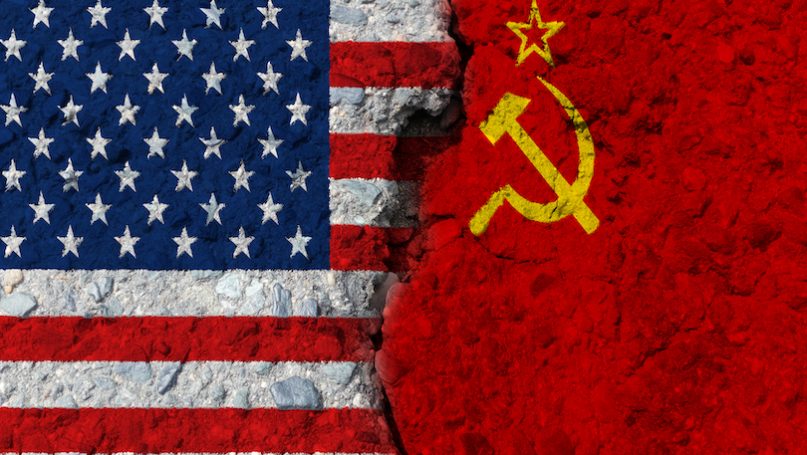
This feature is part of the online resources to accompany the textbook Foundations of International Relations.
The Cold War (1947–91) was known as such because the presence of nuclear weapons made a traditional war between the rival parties (in this case the United States and the Soviet Union) unlikely as they each had the power to destroy each other and in doing so jeopardise human civilisation as a whole. This was known as ‘Mutually Assured Destruction (MAD)’. For that reason, smaller-scale conflict and competition existed but a major ‘hot’ war, such as those in prior decades, was avoided. This period also underlined the importance of ideology in shaping global conflict, principally between capitalism and communism, which produced two incompatible international systems.
The Cold War was responsible for the historical image of a world divided into three zones. The ‘First World’ was the ‘Western’ nations (this is where the term ‘the West’ comes from). These states were allied with the United States, broadly followed an economic system of capitalism, and (at least aspirationally) a political system of liberal democracy. The ‘Second World’ was the Soviet Union and a range of ‘Eastern’ states that were governed predominantly by communist (or socialist) parties who rejected capitalism as an economic model. This conflict between the first and second world went beyond economics and created two irreconcilable international systems – leaving other states a stark choice to operate within one system or the other. That led to some states opting out and declaring themselves ‘non-aligned’ – creating a ‘Third World’. As most of those states were newly formed and/or developing it became a term often used to describe economically poorer states and is still sometimes used as such.
Despite the added ideological element of communism versus capitalism, the Cold War resembled other wars before it in that it became a battle for control over territory. Instead of meeting directly on the battlefield, both sides took part in ‘proxy wars’ as they fought to either support or oppose elements within states who sought to (or appeared to) move between the First and Second Worlds. The most well-known instances of this occurred in Asia, in Korea (1950–3) and Vietnam (1955–75), each of which resulted in several million deaths. As this took place in a time of decolonisation, the goal in this period was not to be seen to directly conquer other states, but to influence their political and economic development and in doing so increase the power of one ‘World’ and diminish the other.
The Cold War ended when the Soviet Union collapsed internally between 1989 and 1991 due to endemic corruption, popular resistance and economic decline. The ‘Second World’ was therefore no more, having lost its anchor. Virtually all of the world’s states then transitioned to capitalism, if they had not already done so. At this point, the term ‘globalisation’ became widely used by scholars and policymakers more generally to describe the process of the First World’s image gradually becoming representative of the entire world. For the first time in history a truly ‘global’ system had been born. States then became categorised more loosely within that global system by their economic levels of development post-1991, with ‘Global North’ sometimes used to represent the most historically developed economies, and ‘Global South’ essentially replacing the term ‘Third World’.
Text adapted from McGlinchey, Stephen. 2022. Foundations of International Relations. London: Bloomsbury.
Below is a collection of multimedia resources that help unpack, and explain the importance of the Cold War.
The Cold War Explained In 15 Minutes
The history of the Cuban Missile Crisis
Cold War: summary on a map
The Cold War: Crash Course US/World History
The Cold War in 9 Minutes
The end of a superpower – The collapse of the Soviet Union
The rise and fall of the Berlin Wall
Exploring the Third World / Non-aligned Movement